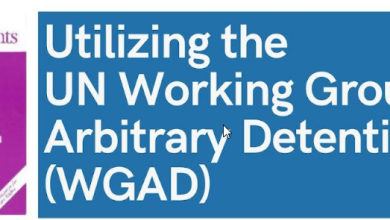Article: Assam govt’s new schemes are about discrimination and communalisation, not justice
Mary E John
 Barely a year after Assam Chief Minister Himanta Biswa Sarma’s crackdown on child marriage ordering arrests of family members of girls married before the age of 18, he is back in the news for two new initiatives. One is a move to introduce a Bill for a Uniform Civil Code (UCC) in the realm of personal laws affecting marriage and related issues. The other is a new scheme — the Mukhyamantri Mahila Udyamita Abhiyaan (MMUA) — announced with much fanfare and a budget of Rs 4,000 crore, to enable rural women to gain greater financial independence by becoming micro entrepreneurs. Unfortunately, both the initiatives leave considerable room to wonder if they are really about empowering women and achieving gender equality — or are they furthering the ongoing project of communalising Assamese society?
Barely a year after Assam Chief Minister Himanta Biswa Sarma’s crackdown on child marriage ordering arrests of family members of girls married before the age of 18, he is back in the news for two new initiatives. One is a move to introduce a Bill for a Uniform Civil Code (UCC) in the realm of personal laws affecting marriage and related issues. The other is a new scheme — the Mukhyamantri Mahila Udyamita Abhiyaan (MMUA) — announced with much fanfare and a budget of Rs 4,000 crore, to enable rural women to gain greater financial independence by becoming micro entrepreneurs. Unfortunately, both the initiatives leave considerable room to wonder if they are really about empowering women and achieving gender equality — or are they furthering the ongoing project of communalising Assamese society?
After the Law Commission of India invited views on a national-level UCC last year, many states began to implement their versions. Assam is the third state after Uttarakhand and Gujarat to announce that it is enacting a UCC. The chief minister has indicated that Adivasi communities would be exempted from the proposed new law, without offering any explanation. He has also promised “innovative elements” to address child marriage and polygamy.
The pointed remarks about polygamy insinuate that the UCC is not about gender equality for all women but a targeted attack on Muslims in deference to the popular myth that polygamy is rife among them. This systematically stoked prejudice is immune to the finding of the National Family Health Survey-5 (NFHS-5) of 2019-20 that polygamy exists in all communities, and that in each case, it is a marginal practice rather than the norm. The incidence of polygamy is 2.1 per cent among Christians, 1.9 per cent among Muslims, 1.3 per cent among Hindus, and 1.6 per cent among other religious groups. The fact that Muslim Personal Law permits polygamy does not lead to substantially higher incidence, just as its prohibition in all other communities does not ensure its absence — indeed, the rates of polygamy do not differ greatly across communities. A uniform code offers no guarantee whatsoever of greater gender justice.
In comparison, the contextual relevance and the need for the scheme to promote entrepreneurship among rural women seem much clearer. Like the rest of India, Assam has suffered a huge employment crisis during the last two decades in which women (across age groups and levels of education) have been the biggest losers. The steepest fall has been in salaried or waged employment, including casual work. Why, then, does the Assam government want to spend Rs 4,000 crore for setting up small businesses as the only means for tackling this crisis?
Self-employment is a very risky and vulnerable method of enhancing the financial viability of households in a volatile economy, where women must meet loan repayment schedules while struggling to generate profits out of tiny investments. A more meaningful intervention would have targeted waged employment in a range of sectors from agriculture to services. Moreover, access to the MMUA is subject to several conditionalities, the most prominent being a differential population norm. To qualify, Scheduled Tribe (ST) or Scheduled Caste (SC) beneficiaries must not have more than four children, while three is the limit for all others. A population criterion might be understandable if families were large — but it is pointless in the context of mounting evidence of the extraordinary declines in fertility across the country, including in Assam.
We live in a time when no one wants more than two children. According to the latest data, the total fertility rate in Assam has dropped from a low of 2.2 children per woman in 2015-16 (NFHS-4) to 1.9 in 2019-2020 (NFHS-5), which is below replacement levels. There seems to be no rational reason for fearing a population explosion even after considering variations by education, caste and community. The relevant numbers (for average children-per-woman) are: 2.3 (women with no schooling) to 1.5 (at least 12 years of schooling); 1.7 (SC), 1.54 (ST), and 1.6 (Other Backward Classes); 1.6 (Hindu), 2.4 (Muslim) and 1.5 (Christian). These are all low figures. It is only in the older age group of 40-49 years that the mean number of children is somewhat higher — 2.7 (SC), 2.6 (ST), 2.5 (OBC), 2.4 (Hindu), 3.7 (Muslim) and 3.0 (Christian). The Assam government ought to be celebrating declining trends in population growth, not introducing criteria of exclusion for the small numbers with larger families.
Such population criteria tend to be highly discriminatory and exclusionary in their effects. The data shows that it is the most disadvantaged — the poorest, minorities, and older women — who will be impacted. The chief minister reportedly said that women with more children were excluded because they would have no time for their businesses, being too busy with their children’s schooling. This is not only unjust but approaches problems from the wrong end. Families with young school-aged children desperately need more financial assistance, including for health and nutrition. On the other hand, older women who may be less burdened with childcare would be disproportionately excluded from this scheme due to the number of children they may have had earlier.
Disincentives and exclusions based on the number of children in a family are undemocratic and violate several international covenants ratified by India. More importantly, they may worsen an already skewed sex ratio. The Assam government’s larger push towards a two-child norm is an invitation to gender-biased sex selection. Daughters become even more unwanted when coercive means are employed to reduce the number of children. Urban Assam already has very low figures for sex-ratio-at-birth. Pushing population norms is likely to intensify these trends, extending them to rural Assam and to communities where these practices did not exist.
Within a larger communalised context, the state may now be poised to pioneer discriminatory laws in the name of gender justice.
(The writer is an independent scholar in Bengaluru. She was with the Centre for Women’s Development Studies, New Delhi.
Courtesy… The Indian Express)








